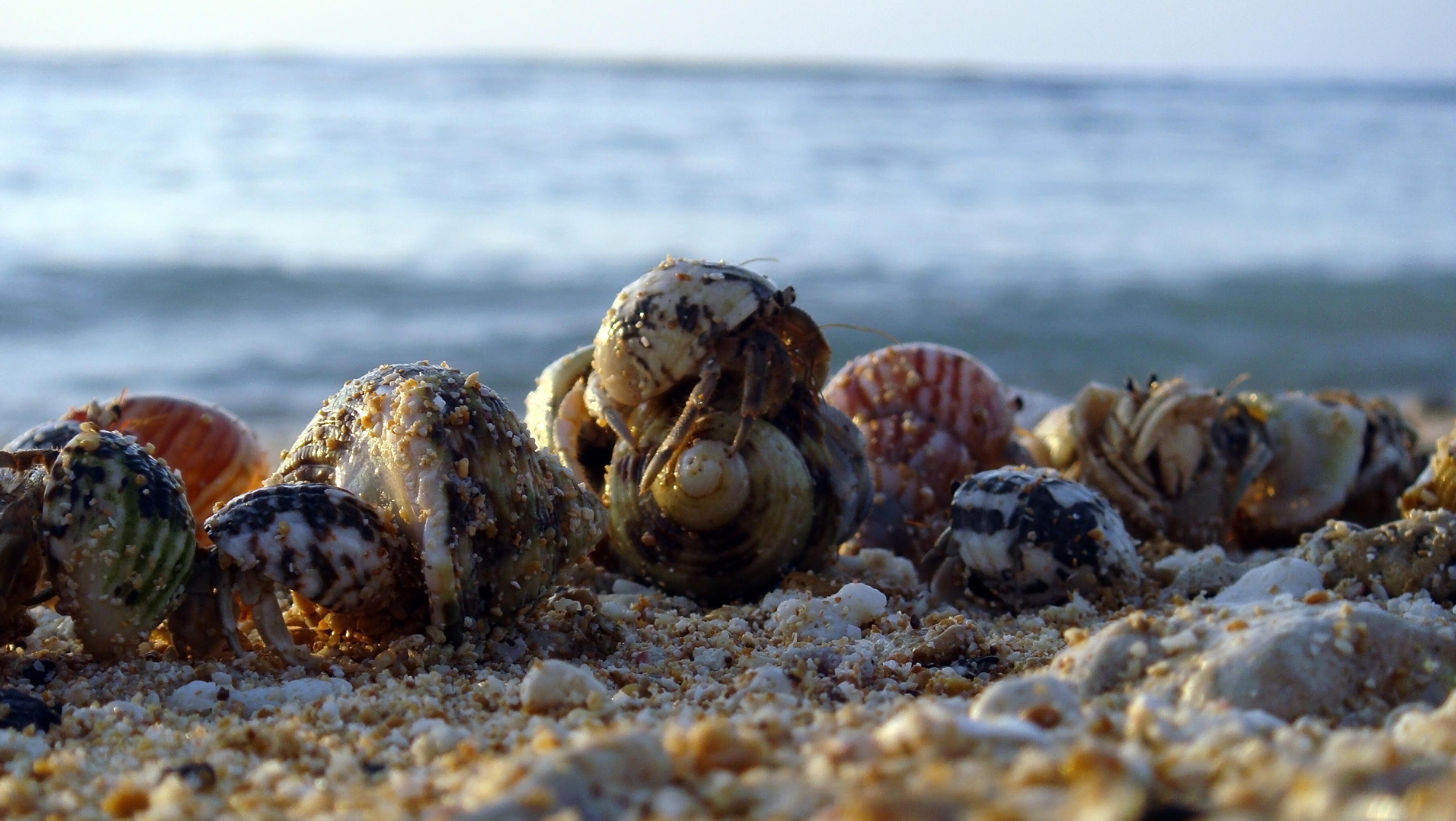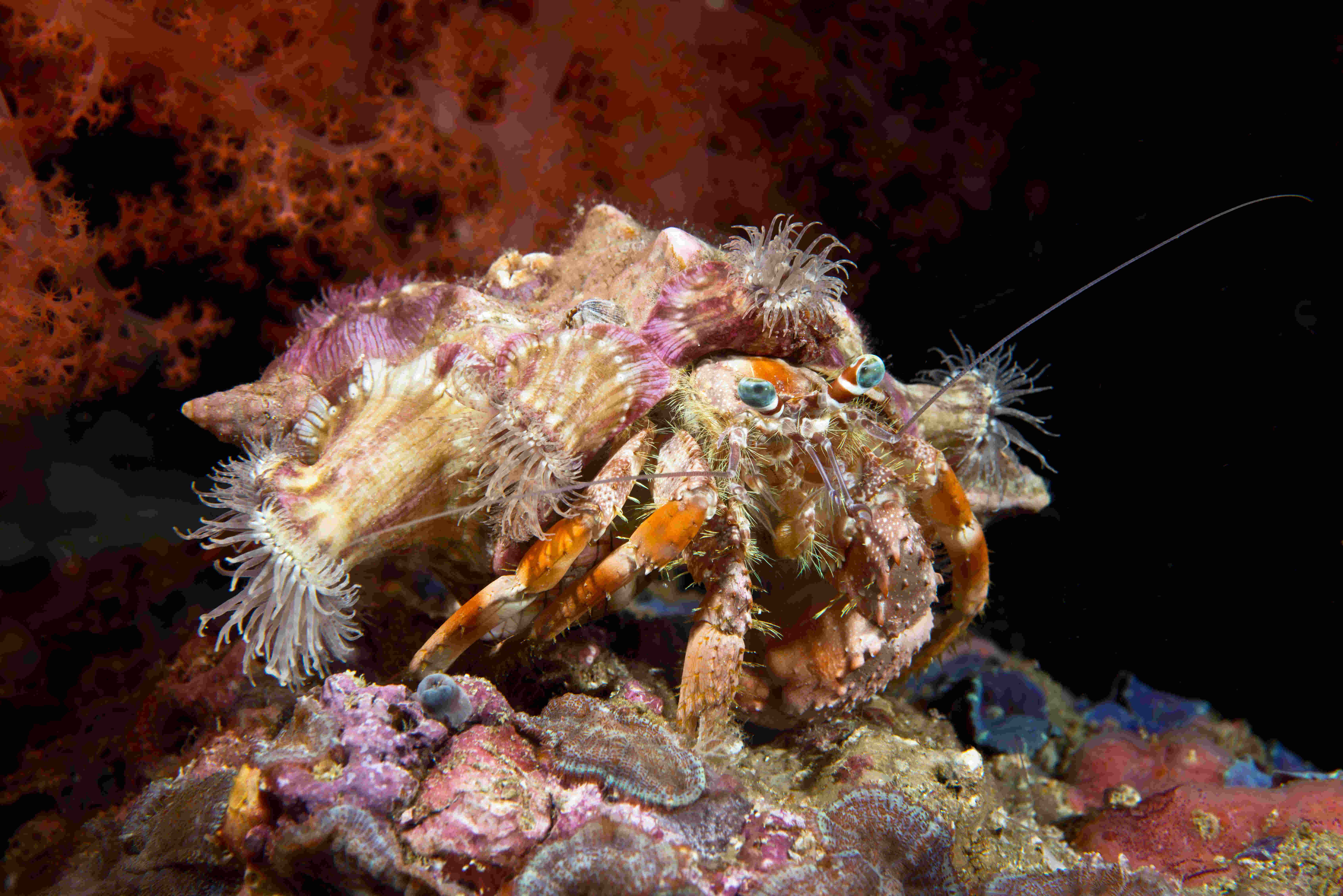
Hermit crabs may seem like “starter pets,” but they’re incredibly complex animals who deserve to live in the wild.
Hermit crabs may seem like “low-maintenance pets,” but they’re incredibly complex animals who are abused in the wild pet trade. Whether sold at pet stores or won at carnivals, many people who get hermit crabs lack the knowledge, resources, or desire to meet the specialized needs of these sentient beings.
Here are seven facts about hermit crabs you might not know.
1. Hermit crabs travel in colonies.
In the wild, these sensitive animals travel in colonies of up to 100 individuals. Some colonies can be comprised of several hundred individuals, making it easier for the colony to find food and shells that suit their size.

2. Hermit crabs can live more than 30 years in the wild.
While hermit crabs in the wild can live more than three decades, most in captivity don’t live nearly as long due to improper care, typically dying between a few months and four years.
3. They’re taken from the wild en masse for the wild pet trade.
Hermit crabs rarely breed in captivity, so they’re captured from their wild homes in order to be sold in pet stores or sold to carnivals for game prizes. When captured, their shells are crushed so they’ll use a “painted shell” as a replacement. The paint on these shells is toxic to hermit crabs, slowly poisoning them.
Watch this heartbreaking video from TikToker JanieLeigh11, who advocates fiercely for these individuals:
@janieleigh11 Hermit crabs deserve better. Please help spread awareness. I have helpful links in my bio for care resources, adoption resources, helpful communities, and hermit crab vendors #hermitcrabs #hermitcrab #nature #animals ♬ original sound - Vocals Nation
4. They can slowly die of suffocation.
A hermit crab’s modified gills require high humidity in order to breathe and since many people don’t know how to properly care for these animals, many hermit crabs slowly die from suffocation. They might seem to be acting normally, but they’re slowly and painfully dying.
5. Hermit crabs molt.
Like many other species of crustaceans, hermit crabs molt—or shed their skin—to grow. This process requires burrowing under deep, damp sand. Hermit crabs bought from the wildlife pet trade are often not given the proper space and environment to molt, resulting in their death.
6. There are over 800 species of hermit crabs.
The vast majority of these species are marine animals, with the only exceptions being one freshwater species and 12 semi-terrestrial species, with female crabs returning to the edge of the sea to release their larvae.
Most of the 800 species of hermit crabs possess an asymmetrical abdomen. Their exoskeleton is soft (non-calcified), so they must occupy shelter like shells to protect themselves from predators.

7. You can help stop hermit crabs from suffering.
By refusing to buy hermit crabs, you can help keep hermit crabs in the wild where they belong. There are two ways you can help protect these animals from a lifetime of cruelty, suffering, and ultimately death:
- Urge PetSmart and Petco to stop selling animals in their stores.
- Download World Animal Protection’s Retail Pet Sale Ban Toolkit, which teaches you how to advocate for wild animals by moving legislators in your community to ban the sale of these amazing creatures.